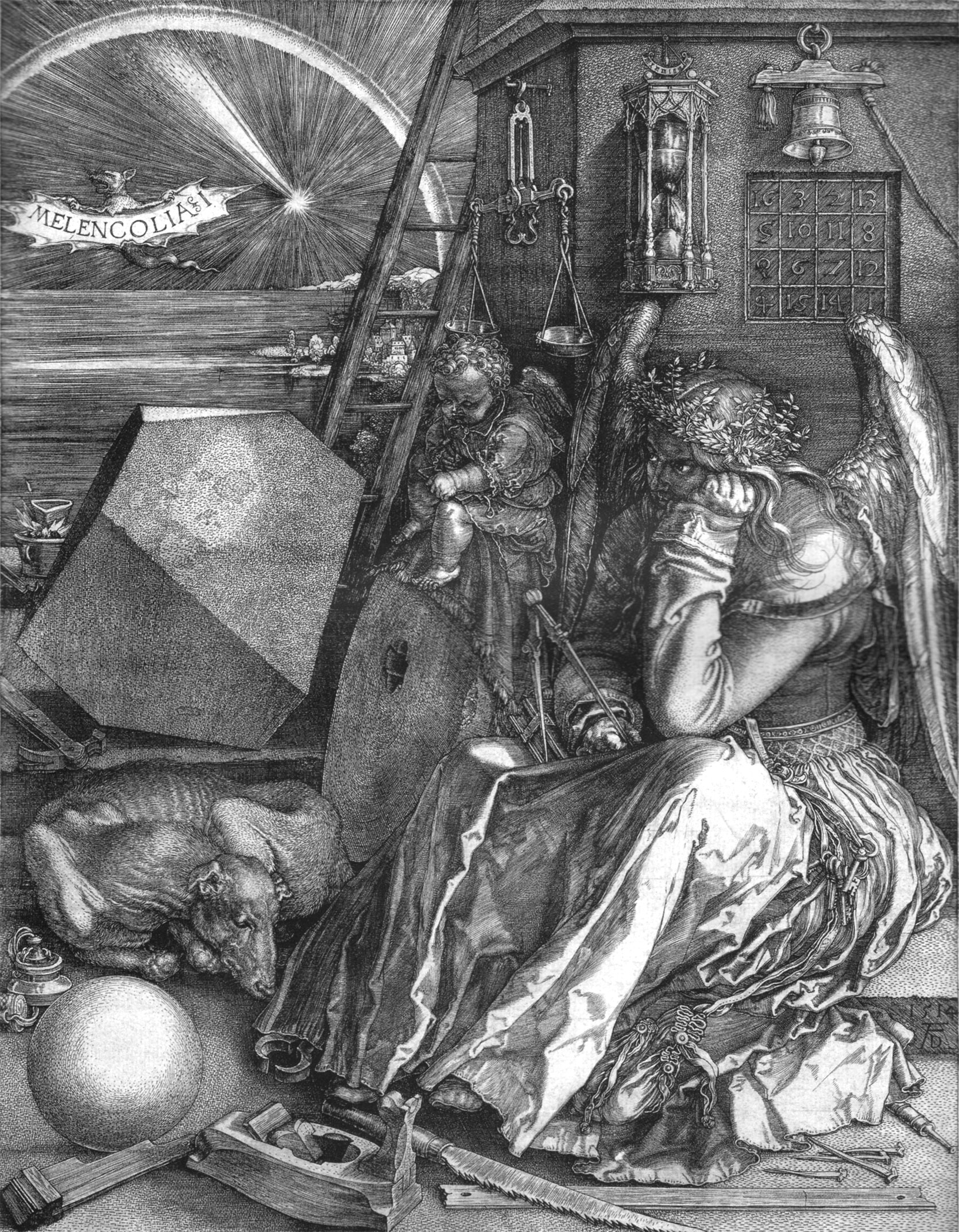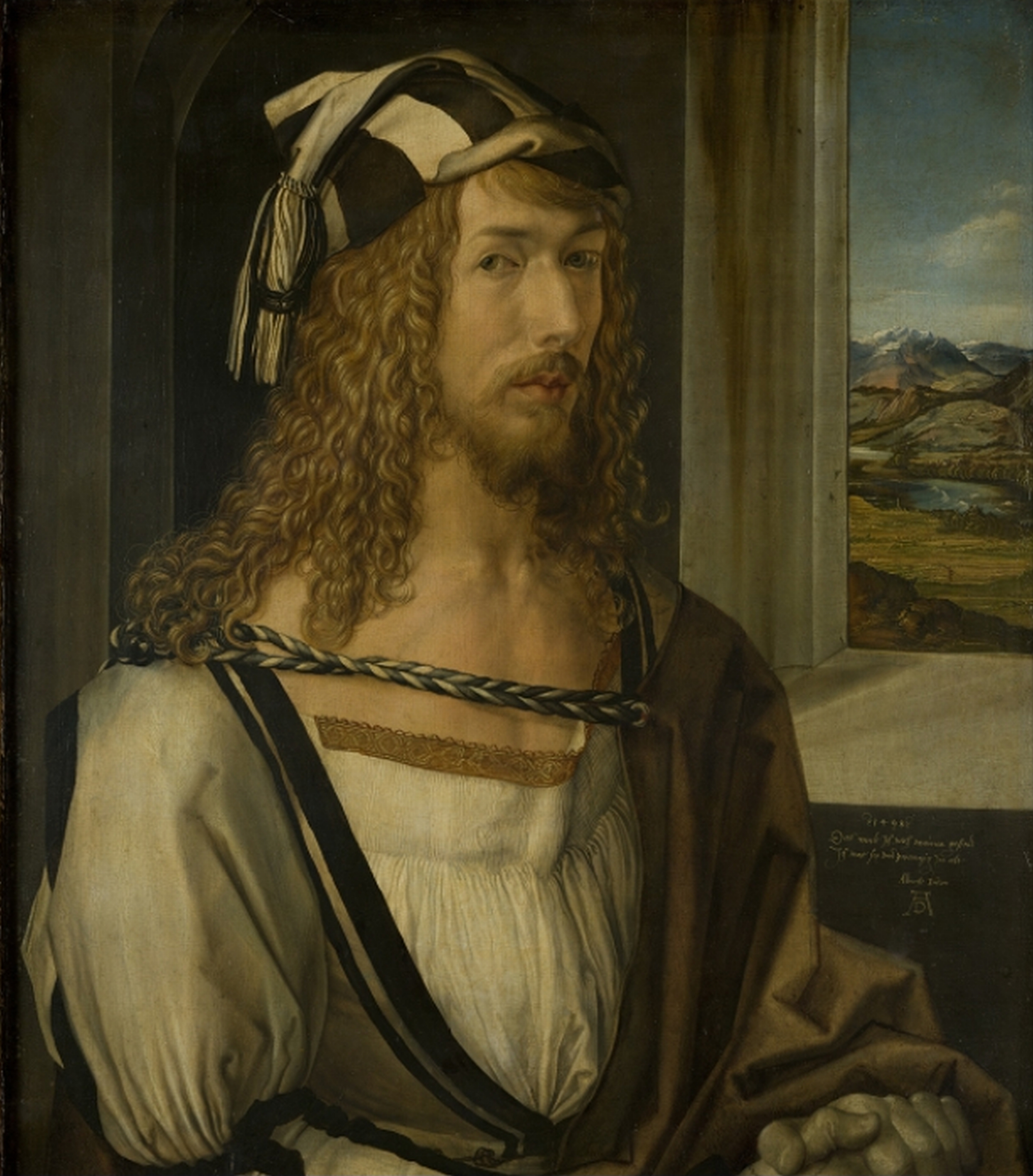Creativity in the arts was the realm of the imagination, considered the first and lowest in the hierarchy of the three categories of genius. The next was the realm of reason, and the highest the realm of spirit.
In medieval philosophy people were thought to be subject to the four humors. Melancholy, associated with the gall bladder and black bile, was the least desirable of the four, with melancholics considered the most likely to succumb to insanity. During the Renaissance melancholy was linked to creative genius; therefore, while changing the status of this humor, it reminded the artist that their gift came with terrible risks.
The only engraving by Dürer to include the title within the plate, Melencolia I, is assumed to refer to the first of the three types of melancholia defined by the German humanist writer Cornelius Agrippa. In this first type, called Melencholia Imaginativa, ‘imagination’ predominates over ‘mind’ or ‘reason’.
The winged personification of Melancholy, seated dejectedly with her head resting on her hand, holds a caliper and is surrounded by other tools associated with geometry, one of the seven liberal arts underlying artistic creation, and the one through which Dürer, probably more than most artists, hoped to approach perfection in his own work. This has led several art historians to suggest that Melencolia I should be interpreted from an autobiographical point of view.


 Albrecht Dürer
Albrecht Dürer